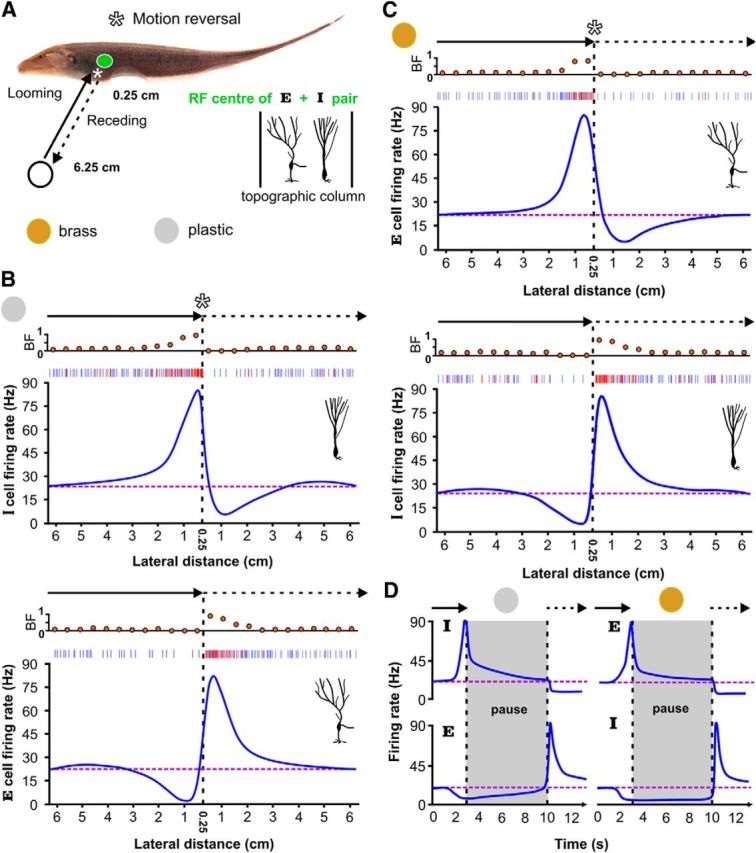Figure 1.

E (ON) and I (OFF) cells cooperatively encode object movement along the lateral body axis. A, The leading edge of the plastic or brass spheres start at an initial position of 6.25 cm from the skin and move toward the RF center of an E- and I-cell pair, stopping at 0.25 cm. The sphere then immediately recedes back to the initial position (velocity = ±2 cm/s and acceleration = ±150 cm/s2 during reversal periods). This sequence was repeated to mimic the swinging of plastic rods during a behavioral tracking experiment (Heiligenberg, 1973a,b), while we recorded in vivo from E and I cells. B, Top, As expected from static conditions and labeled line coding, the firing rate of an I cell increases as the plastic object approaches the cell's RF center. Although there are increases in both tonic (blue) and burst spiking (ISI < 10 ms; red), the top raster plot shows that burst spikes dominate at closer range as reflected by the dramatic increase in BF. However, as the sphere reverses direction, and begins to recede from the body, the strong bursting is immediately silenced and the I-cell firing rate decreases sharply, dropping below baseline levels (purple dashed line). Note that the smoothing algorithm underestimates the peak firing rates; nevertheless, it is an effective aid for visualizing the trends. Bottom, As the plastic sphere looms toward an E cell's RF center, the firing rate is suppressed due to the local decrease in electrical contrast. As the plastic sphere withdraws, the E cell suddenly explodes into action with increased bursting and tonic spiking, despite the fact that the local sensory contrast is still negative. The E-cell firing rate gradually returns to baseline as the sphere recedes, effectively mirroring the response of the I cell during the plastic sphere approach. C, For a conducting object, like the brass sphere, we see that the E and I cells (top and bottom) switch motion coding roles. D, An object may come to rest near the fish, and then, at some future point, recede. To ensure E and I cell switches still occurred, we tested the same motion sequence, but delayed receding by 7 s after looming. Despite the changing state of adaptation in the system, the switch responses are still observed.
